A PhD Researcher's 120+ Ayahuasca Experiences in the Peruvian Amazon: Rebekah Senanayake with Dr. Darian
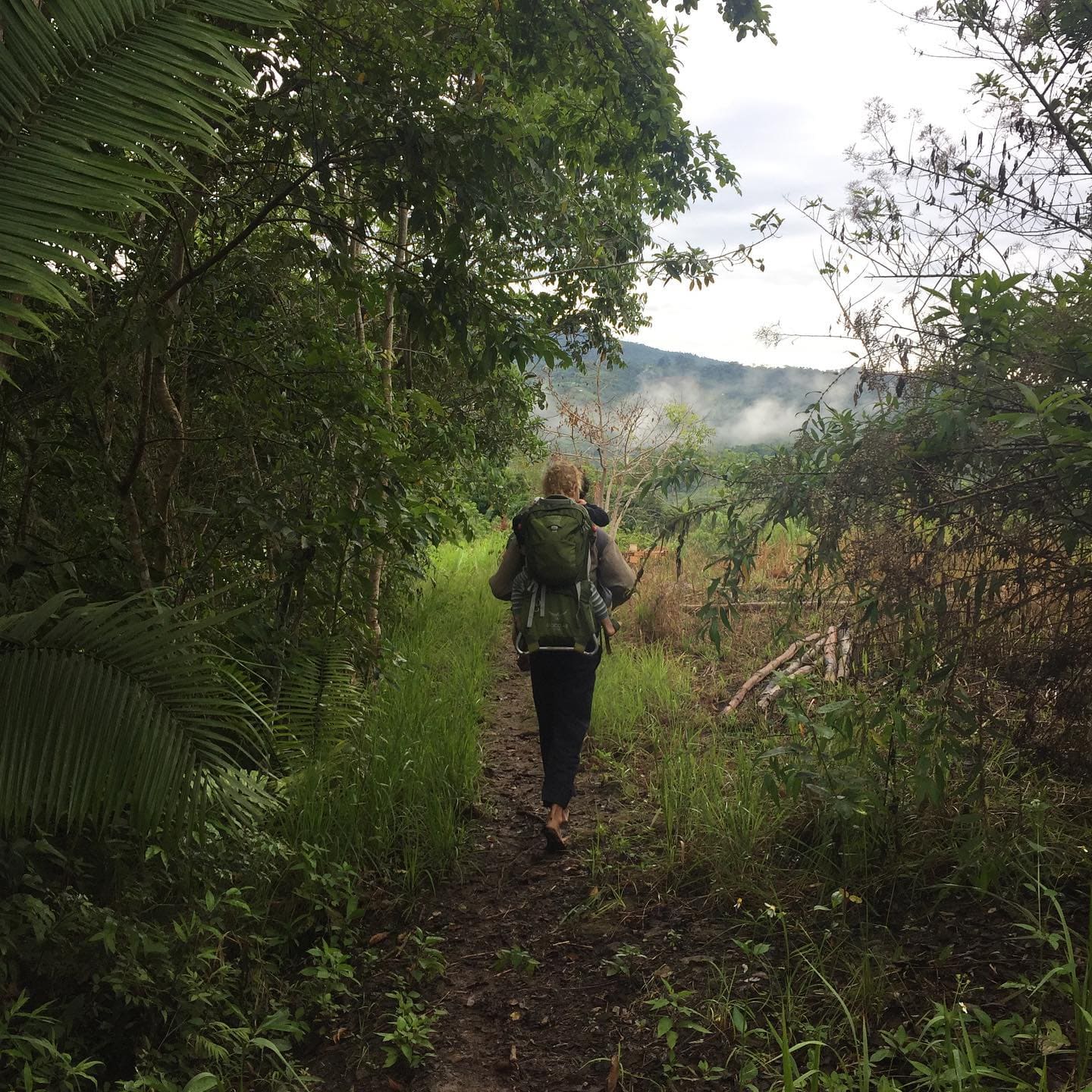
@bekplants - https://www.instagram.com/p/B5siCCJjQ1c
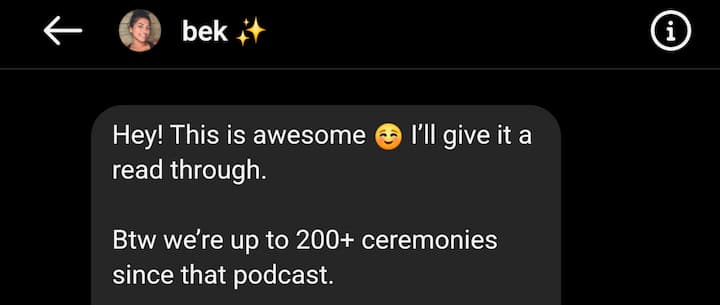
Introduction
As a researcher who has spent seven years conducting immersive fieldwork in the Amazon rainforest, I have had the privilege of participating in over 120 ayahuasca ceremonies while studying the profound relationship between this sacred medicine, indigenous knowledge, and the rainforest itself. My research delves deep into not only the traditional applications of ayahuasca but also explores its broader implications for our understanding of human consciousness, healing practices, and our fundamental connection to nature.
Research Background and Methodology
My journey began seven years ago when I first stepped into the Amazon. The rainforest and its plant medicines had fascinated me since childhood, and when the opportunity arose during a South American trip to explore this interest further, I seized it. Upon learning about ayahuasca, I made a conscious decision to experience it firsthand rather than approaching it through preliminary research.
What I discovered was nothing short of profound. The power lay not just in the medicine itself, but in the intricate ceremonial construction and the remarkable expertise of those who could navigate these altered states. While ayahuasca is indeed a remarkable medicine, I came to understand that its true significance lies in how this knowledge has been preserved for thousands of years - a testament to its deep importance in human experience.
This initial experience led to a structured academic pursuit, progressing through a bachelor's degree, honors research involving three months of Amazon fieldwork, a master's degree focused on psychedelics, and now a PhD. The research benefits from long-term relationships built over 4-7 years with indigenous healers, fostering a level of trust that enables deeper knowledge sharing.
Adapting to the Amazon's unique conditions was a crucial part of the research process. The environment presents distinct challenges - from mosquitoes to tarantulas - requiring gradual acclimatization to effectively conduct fieldwork in this setting.
The Amazon and Plant Medicine Connection
The relationship between the Amazon rainforest and ayahuasca represents a profound symbiosis that extends beyond mere botanical occurrence. My first encounter with the Amazon River from above revealed its serpentine nature, a natural formation that immediately challenged human ego and construction. This initial awe has only deepened through years of research and ceremonial experiences.
The Amazon provides not just the physical setting for ayahuasca ceremonies, but serves as an integral part of the healing process. The raw power of nature - from torrential storms to the forest's living presence - creates a context that helps participants transcend ordinary human experience. This connection to nature has proven to be a crucial element in both the ceremonial practice and personal healing journeys.
Understanding Altered States
The human pursuit of altered states of consciousness is a fascinating aspect of this research. A landmark 1967 study by anthropologist Erika Bourguignon found that 90% of societies globally had some form of accessing altered states, primarily for healing and knowledge transmission. This near-universal presence suggests a fundamental human need for these experiences.
In the context of ayahuasca, the Tucano people of Colombia maintain a creation myth that positions the medicine as a bridge to the spirit world. While Western science often sidesteps spirituality, the research reveals ayahuasca's multifaceted roles beyond just mental health treatment - including creativity enhancement, conflict resolution, and community harmony.
The medicine serves as both a healing tool and a knowledge bank. Maestros (traditional healers) consult ayahuasca for insights about patients' illnesses and to deepen their understanding of plant properties. The sophistication of the ayahuasca brew itself - requiring specific combinations of the ayahuasca vine and chacruna leaf - speaks to the depth of traditional knowledge developed over generations.
Indigenous Expertise and Training
The depth of indigenous knowledge in working with ayahuasca reflects generations of expertise and rigorous training. The traditional initiation process for healers typically spans 3-5 years, involving intensive apprenticeship with multiple maestros in the Amazon. This training includes strict dietary restrictions - no salt, sugar, oils, or fats - with a basic diet of rice, plantain, and fish, along with regular ayahuasca ceremonies at least three times weekly.
The sophistication of this training becomes evident in the subtle yet powerful ways healers manage ceremonial spaces. For instance, in open-air tambos (ceremonial huts), healers can create protected spaces where even mosquitoes don't enter - a phenomenon that demonstrates their mastery over energetic fields. This level of expertise is comparable to the difference between a first-year medical student and a specialized surgeon.
Trust and Research Relationships
The foundation of this research lies in the deep trust built with indigenous healers over seven years of engagement. As articulated in MAPS' 2020 ethics pledge, "change moves at the speed of trust." This principle has proven crucial in accessing deeper levels of traditional knowledge while respecting cultural boundaries.
The research relationship extends beyond individual healers to encompass entire families and communities, creating a rich network of knowledge sharing. This intimate connection allows for careful consideration of what knowledge can be shared publicly versus what must remain within traditional contexts.
Modern Applications and Challenges
As ayahuasca gains global attention, the research highlights both opportunities and challenges. While there's growing scientific interest in its mental health applications, the study reveals broader potential uses - from enhancing creativity to facilitating community conflict resolution. However, the commercialization of these practices has led to concerns about authenticity and safety, with experienced healers emphasizing the importance of proper training and respect for traditional protocols.
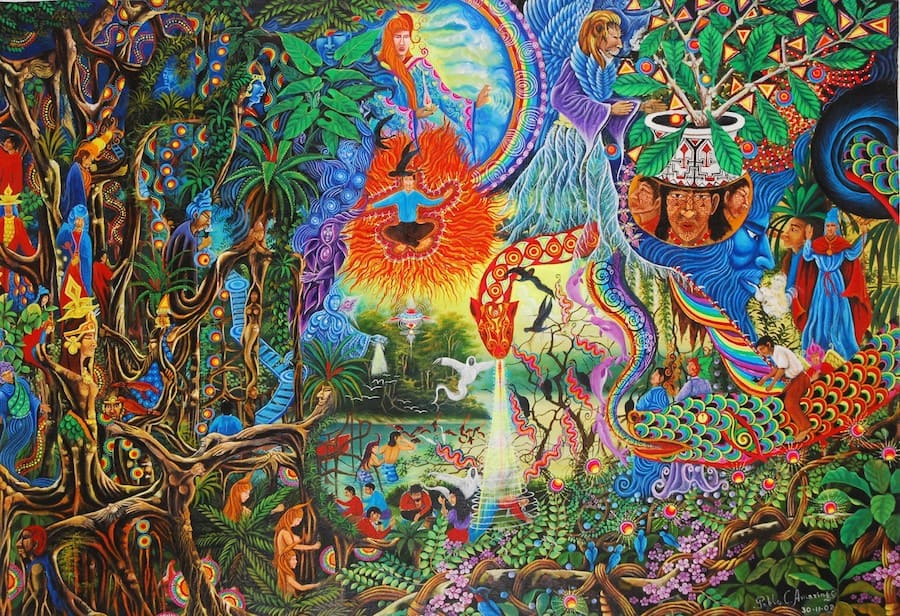
Art from Ayahuasca visions book by Luis Eduardo Luna
That's a really interesting question. Michael Pollan's book was quite pivotal for me in my research career, he writes beautifully about what we are seeking in these states.
The first thing that interests me is a study done in 1967 by anthropologist Erika Bourguignon. She looked at a bunch of societies globally and found that 90% had some form of accessing an altered state. That number is significant - 90% of societies have some way of doing this, so there must be some prevalence that makes people think this is important, otherwise why are so many doing it?
A lot of these states from what she found were used for healing or transmuting knowledge. With ayahuasca, there is a myth from the Tucano people of Colombia that says ayahuasca came to them as part of their creation story, as a way of maintaining connections to the spirit world.
In Western science, spirituality isn't included as much. But it's still interesting to see psychedelics used in some way to maintain a connection, whether to another spiritual realm or to another part of yourself. It's almost extending past just the human as who I am today.
There's profound research now about the mental health benefits of psychedelics. What I'm interested in with my project is looking at the functions of ayahuasca beyond that. I acknowledge it's an amazing mental health and physical health tool, which I've seen with ayahuasca especially for gut illnesses. There seems to be some connection between mental and physical healing that I'm seeing in the ceremonies.
But I'm also interested in other elements like creativity, societal harmony - there are old ethnographies about ayahuasca being used in situations of conflict, where if people aren't agreeing they'll have a ceremony, talk it out. It's like consulting an elder or something else that's wise - have a conversation and bring that back to the community. You don't want to live in disharmony.
So there are a lot of different accounts and that's what really interests me in this project. The psychedelic renaissance is great and I'm 100% here for it, but with so much research being done on mental health, I want to see what else is out there, what else is inside this galaxy of uses. Let's do a bit of discovery into that.
The Ancient Purpose and Spiritual Connection of Ayahuasca
The primary purpose of ayahuasca in ancient times is a complex question that lies at the crux of my research. As my investigation deepens, I'm discovering there are more layers to this picture than initially apparent.
The Tucano myth and their creation story frequently reference ayahuasca as something that connects to something else - specifically the spiritual world. Interestingly, in the post-missionary era, Catholicism has spread extensively through Amazonia. The religious presence is quite strong here, with many maestros being religious themselves. During ceremonies, I've observed them invoking the Catholic priest.
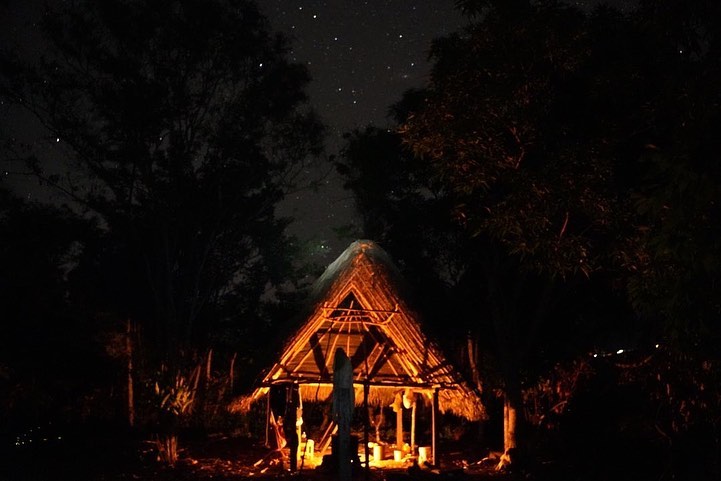
What fascinates me is how this represents another way of maintaining a connection to something divine, with ayahuasca serving as the vehicle. While the entity they're connecting to may differ, the fundamental purpose remains.
Beyond spiritual connection, ayahuasca functions as a knowledge bank. Maestros consult it to understand more about a person's illness or to learn about particular plants and their functions. According to ancient stories shared with me about ayahuasca's discovery, it was often revealed through a plant spirit. These accounts suggest the ancient peoples maintained such a strong connection with the spirit realm that plant spirits directly guided them on which plants to use and how.
The ayahuasca brew itself demonstrates remarkable sophistication, combining two plants - the ayahuasca vine and chacruna leaf (in Peru and most of Latin America). These must be mixed in specific quantities to achieve the intended psychedelic effects. The precision of this combination is remarkable considering the vast biodiversity of the Amazon jungle - discovering two plants that work together so perfectly seems extraordinary.
The complexity extends further - both the chacruna leaf and ayahuasca vine come in different varieties, with only certain types compatible with each other. This sophisticated knowledge of plant combinations reminds us that life is full of tangents - nothing happens quite the way we expect! the way we expect**!
Personal Journey and Reflections on Western Science
When I reflect on how I ended up here, I never saw myself doing this exact work, but I'm absolutely stoked about how it unfolded. I could not have asked for it to unfold better.
During my first ceremony, the first thing I saw was the Amazon. It appeared above me, and in that moment I knew I would spend more time here than initially expected. While it was obvious this place would be significant, I couldn't have predicted how - it's turned out even nicer than I expected.
Perspectives on Western Science and Indigenous Knowledge
One of the most pressing concerns in the current psychedelic renaissance is the approach to safety as more places legalize or decriminalize these substances. When considering safety protocols, it's crucial to consult those with extensive experience rather than newcomers to the practice.
This highlights the vital role of indigenous peoples and traditional practitioners who have worked with these medicines for thousands of years. Their multi-generational knowledge, passed down through families and communities, represents an invaluable resource.
The disconnect between Western scientific approaches and traditional knowledge can be troubling. Western science often takes a reductionist view - focusing solely on brain mechanisms and effects while missing the spiritual dimensions and subtle nuances that require careful integration. The clinical approach, while valuable, is incomplete.
To be clear, I'm not against Western science - I have great respect for it and believe it has an important place. However, there needs to be a softness in the approach, especially given how sensitive these states are in psychedelic science.
My personal experience spans approximately 120 ayahuasca ceremonies with about 15 different healers across South America - Colombia, Peru, Brazilian brews. I've witnessed firsthand how different healers work, observing the level of subtlety in their ceremonies and the level of protection they put in. It constantly amazes me to see how thoroughly they know what they're doing - how they protect the space, navigate the space, and even handle my own personal healing experiences. Their interaction in that space demonstrates profound expertise.
This represents a very sophisticated technology that they have maneuvered and known for a very long time. Most practitioners come from a line of healers who have been practicing this as well, with initiations starting at maybe 18 years old or even younger. I've even observed children as young as 14 being initiated into these traditions. traditions.
Early Initiation and Training in Ayahuasca Traditions
In traditional ayahuasca practices, initiation can begin as young as 14 years old. The medicine is administered in very small amounts - mere drops that would produce only mild effects compared to full ceremonial doses. This early exposure is part of the careful training process.
The nuances and sophistication of traditional ayahuasca practice reflect generations of accumulated expertise. The standard initiation period spans 3-5 years, during which apprentices live with maestros deep in the jungle. They follow an extremely strict ayahuasca diet - no salt, sugar, oils or fats, subsisting primarily on rice, plantain and fish. Sexual abstinence is required. Throughout this period, they participate in ayahuasca ceremonies at least three times weekly.
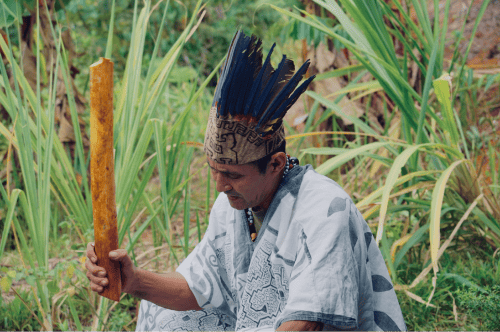
This intensive training process develops the expertise needed to properly hold ceremonial spaces. The difference in skill level is comparable to that between a first-year medical student and an experienced surgeon. The healer I currently work with trained under 16-17 different maestros across the Amazon region. His own initiation diet lasted 5 years without salt - an extraordinary commitment.
The depth of knowledge these practitioners possess after decades of experience is phenomenal. My current teacher spent 5 years in intensive training followed by 40 years of practice. He intimately knows the ceremonial space and its subtle energetics.
One fascinating demonstration of their mastery is how mosquitoes avoid entering the ceremonial space. Despite ceremonies taking place in open-air tambos (ceremonial huts with four pillars and palm leaf roofs) in the middle of the jungle at night, mosquitoes never cross the energetic boundaries. This inexplicable phenomenon points to the subtle power of properly held ceremonial space.
The work requires extreme precision and sensitivity - like performing delicate brain surgery on the energetic level. This degree of expertise allows them to navigate to exactly the right point without disturbing the delicate field. The sophistication of traditional practice reflects generations of refined knowledge passed down through careful training. of refined knowledge passed down through careful training.
The Universal Purpose of Ayahuasca
This question of whether ayahuasca is meant for all life forms to experience deeper meaning has tossed over in my mind quite a bit recently. I believe it has great potential.
The Tucano myth provides important insight - ayahuasca was put here to maintain a connection to the spirit realm, but also to show humans how to be human. This dual purpose is fascinating.
Historically, in older societies, ayahuasca use was selective - only certain people would partake and bring back the messages to their communities.
In the modern context, we need more scientific research on critical areas like interactions of different medicines, particularly between pharmaceutical medicines with ayahuasca, and understanding its relationship with certain mental illnesses. The approach must always err on the side of more caution, deferring to someone who really knows what they're doing.
The maestro I work with demonstrates this expertise - I have confidence in him knowing how to navigate these complex interactions due to his extensive experience. While scientific validation is valuable, the knowledge must ultimately come from some expert in some way.
A profound question I've explored in my blog is considering what is the plant's intention? What does ayahuasca get out of our communion? This requires acknowledging that plants have spirit and a certain level of sentience - something increasingly supported by scientific discoveries about tree communication systems, emotions and feelings. We're learning these life forms are much higher level than we thought.
Sometimes I approach this by trying on a hat, a different way of thinking to see how it feels. When we examine the experience, the effect, the respect for nature we get from ayahuasca, perhaps we become somewhat inspired to protect nature in some way. While our current relationship with nature is troubling, this perspective offers hope for deeper connection and understanding..
The Profound Impact of Trust and Intimacy in Research
The most profound aspect of my research has been the deep intimacy and trust built with the healers and participants over time. This foundation of trust has been essential to accessing deeper levels of knowledge and understanding.
In 2020, MAPS created an ethics pledge for researchers in the psychedelic field, establishing moral frameworks for this emerging science. One of their key principles states that "change moves at the speed of trust" - something I've witnessed firsthand over these seven years of work. While the maestro I work with possesses phenomenal expertise and experience, it's our level of trust and ongoing friendship that enables true knowledge sharing. This relationship extends beyond just him to include his family, mother, daughters, and their children - creating a whole interaction network.
This deep trust has been instrumental in producing quality research, fostering an intimate relationship where we can openly share ideas. With the substantial data collected, we'll collaboratively review everything before my thesis to determine what's appropriate to share versus what traditional knowledge should remain private, given the intimate nature of the information.
This knowledge represents the sacred heart of the community - their spiritual heritage. The intimacy developed through years of knowing both the people and their environment has created a space where they feel comfortable sharing with me and endorsing the research project.
My initial engagement involved a three-month research project, but has since expanded to a year-long commitment that received full support from the community. Having every stakeholder completely on board is particularly meaningful given the history of indigenous oppression and stolen knowledge. Their trust in me as a researcher to proceed ethically represents perhaps the most valuable aspect of this project.
This level of research access would have been impossible without the foundation of experience and trust built over time. While establishing these relationships has been a long process, I feel fortunate to now be in a position to enjoy the fruits of that investment. The current success reflects years of careful relationship building and mutual respect. success reflects years of careful relationship building and mutual respect.
The Growing Interest in Ayahuasca: A Reflection on Modern Seeking
People seek what they lack - this fundamental truth helps explain the growing interest in ayahuasca and other traditional medicines. The current state of society, with its widespread pain and disconnection, has created a deep yearning for healing and meaning.
This seeking reflects a spiritual vacuum in Western society. As humans, we intuitively sense there is something deeper and more nuanced missing from our modern lives. It's comparable to a dish lacking its final garnish - we know something should be there to complete it, but it remains elusive in our current paradigm, driving people to look elsewhere.
The ayahuasca phenomenon is particularly interesting because it operates on multiple levels. First, it facilitates direct relationships with indigenous cultures through people who can bridge these worlds. This cultural exchange is invaluable - beyond just the ceremony itself, we can learn from how ayahuasca practitioners live, how their communities function, and what wisdom we might bring back to our own societies.
However, there is also a commercial aspect that requires careful consideration. As the maestros here have warned me, the monetization of these practices has led to a proliferation of fraudulent shamans. From my personal experience with approximately 15 different practitioners in this region, I would only recommend 2-3 in the present day. While not all questionable practitioners are deliberately deceiving people, many simply lack the necessary expertise. The distinction often lies in their level of authentic knowledge rather than their intentions.
This pattern is common with any practice that gains widespread popularity - as something grows, there will inevitably be those who try to capitalize on it without proper understanding or training. This commercialization of sacred practices presents one of the key challenges in the modern ayahuasca landscape..
The Evolution of Spiritual Seeking in Western Society
Research clearly shows that while organized religion is declining in terms of membership, attendance, and places of worship in Western society, people's fundamental belief in a higher power remains as strong as ever. This reflects a fascinating shift in how modern individuals approach spirituality.
The contemporary seeker appears to be moving away from traditional religious structures that may feel antiquated or restrictive, searching instead for more direct and authentic spiritual experiences. The growing interest in psychedelics represents this evolution - offering a path for humans to connect with something greater and, as revealed in the Tucano teachings, learn how to be truly human.
Reflecting on the Tucano myth's wisdom, we can understand psychedelics as tools for reconnecting with the transcendent while simultaneously grounding us in our proper place within the cosmic order. This positioning comes not as harsh judgment but rather as gentle guidance - like a parent's loving hand showing a child their rightful space in the world.
Core Lessons from Ayahuasca About Being Human
Through my extensive work with ayahuasca, I've gained profound insights about the human experience. The first thing that comes to mind is that fear is an illusion. While there's a clear distinction between feeling fear and actual danger, more often than not, our fears are illusory.
Respect has emerged as a fundamental principle. The medicine has shown me that we're custodians of the earth, placed here to look after nature. Yet simultaneously, nature is put here to look after us - it's a reciprocal loop that flows both ways.
My initial hook with ayahuasca came from several aspects. While the ceremonies were profound and the benefits resonated well with my system, it's noteworthy that this was actually my first psychedelic experience - diving in right in the middle of the Amazon. I distinctly remember my first ceremony thinking "wow, you've done some things in your life but this is definitely one of the most interesting!"
However, the most compelling effect manifested after returning home from my first month in the Amazon - my relationships grew stronger. Through some inexplicable transformation, something happened where suddenly people made more sense and I found myself able to give more love. This love was received and reflected back, creating a beautiful loop. Given my deep appreciation for people, especially my friends and family, this enhancement of human connection really touched my heart. That's when I realized this was truly something significant.
Working with my current maestro has helped me recognize how ayahuasca assists in unpacking Western thought patterns. As someone working in academia pursuing a PhD, I'm deeply embedded in Western intellectual frameworks. The medicine helps me identify when these frameworks have unconsciously taken root in my thinking.
Recently, the maestro shared profound wisdom about self-love. While I had initially dismissed this as a modern Western concept, he revealed it as one of ayahuasca's core teachings - the importance of loving, respecting, and caring for oneself. For him, this manifests through drinking ayahuasca and maintaining a clean diet - these practices are expressions of self-love. His perspective was deeply moving and challenged my preconceptions.
The medicine has also highlighted the West's problematic relationship with ceremony and ritual. While Western culture maintains certain ceremonies, they often lack deeper spiritual significance and intention. This is particularly evident in our approach to life transitions. The absence of meaningful rites of passage, especially around puberty, creates a notable void in Western society. Many traditional cultures maintain formal initiation rites marking the transition from childhood to adulthood - whether girl to woman or boy to man - providing crucial structure and guidance during these transformative periods.
This absence in Western culture feels particularly hollow given the challenges young people face during puberty. A formal framework could help create stronger individuals and a more grounded society by supporting people through these critical transitions. The West desperately needs more structured rites of initiation beyond superficial celebrations like sweet sixteen parties - something that truly honors and guides these profound life transitions..
Perspectives on Death and Future Research Directions
One of the most profound insights from my work has been around our relationship with death. In Western society, we have an incredibly difficult time dealing with and even discussing death. Psychedelics offer a tremendous benefit in decreasing the fear of death and fostering acceptance. I've observed that most young people don't really internalize their mortality - it feels distant and abstract, something to be solved or avoided.
In my own practice, I maintain constant awareness of my mortality. This remembrance serves as fuel, pushing me to accomplish meaningful work and maintain reverence for life itself. However, the Western approach to death remains problematic. People generally die in sterile hospital environments, often alone or with limited company - far from ideal conditions. While there are exceptions, like the celebratory death traditions of historical New Orleans, these are rare. The typical Western death experience remains sadly isolating.
The fear surrounding death in Western culture reflects a deeper resistance to accepting it as a natural part of life. People desperately cling to life, though in my experience, there comes a point where gentle acceptance of someone's journey becomes essential.
Looking ahead professionally, I aim to continue this research, though perhaps in a context less rigid than traditional academia. My strengths as a researcher lie in fieldwork - I genuinely love living in the jungle. Rather than forcing ourselves into uncomfortable roles, I believe researchers should collaborate across their natural inclinations. While I could work in a lab setting briefly, my true satisfaction comes from field research.
The realm of plant medicines represents an enormous field with vast potential for continued investigation. I've recently begun exploring documentary filmmaking as a complementary avenue to my research. As someone who loves writing, as evidenced by my blog, I'm drawn to making research more accessible. Traditional academic writing often requires specialized education to comprehend, whereas documentaries can communicate complex ideas to broader audiences.
I'm currently experimenting with documentary work, carrying my camera and gathering footage. This focus on accessibility feels crucial - finding ways to share these important insights beyond academic circles. Anyone interested in learning more can connect with me on social media @bekplants or through my blog bekplants.wordpress.com.